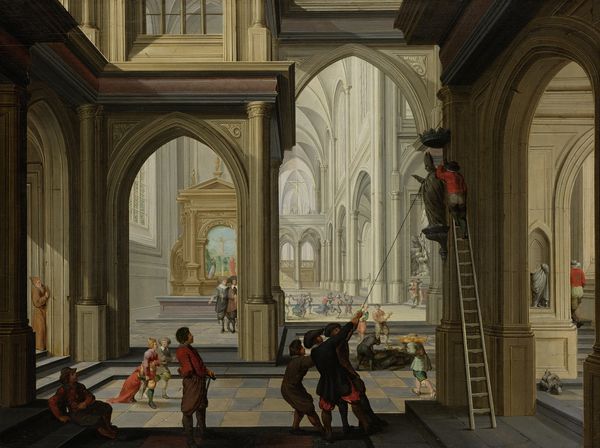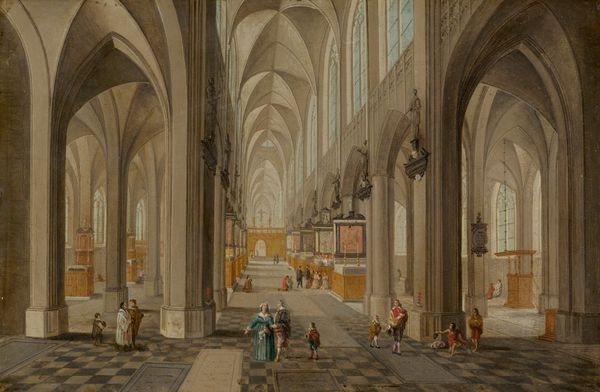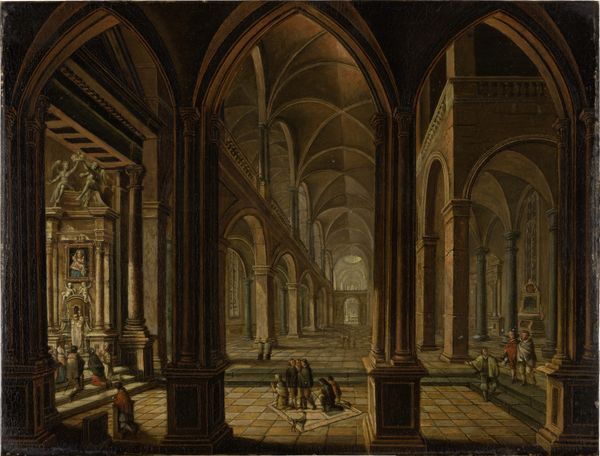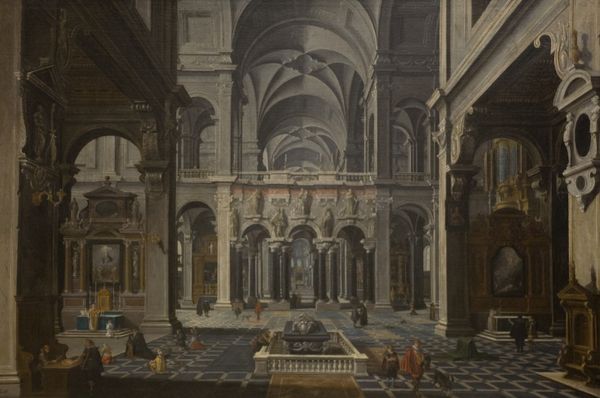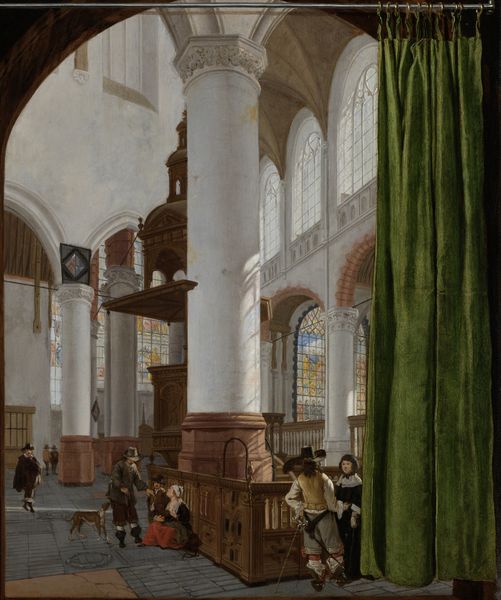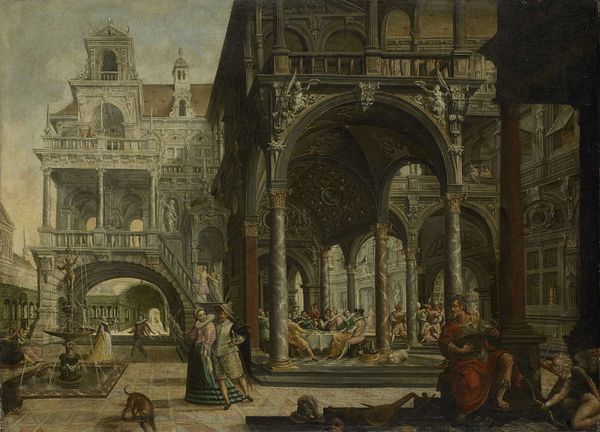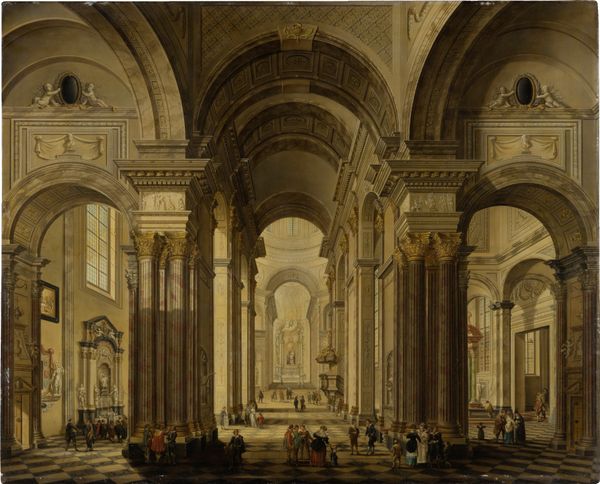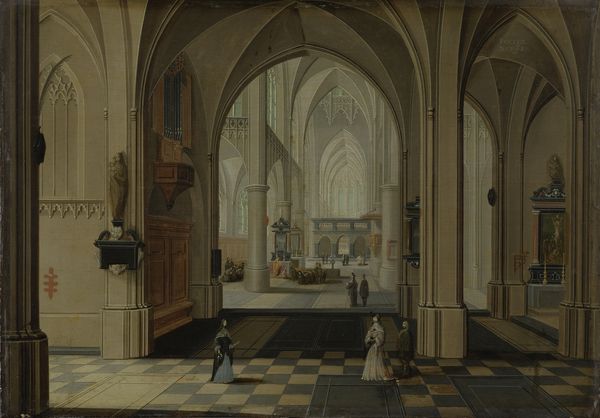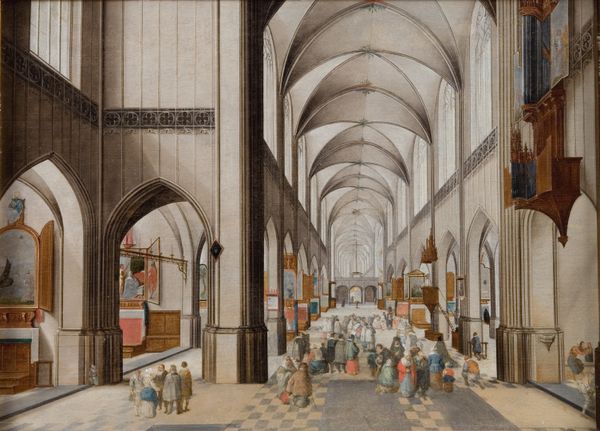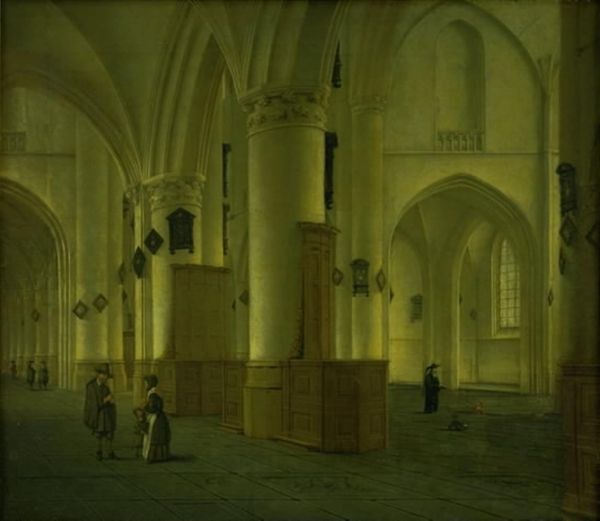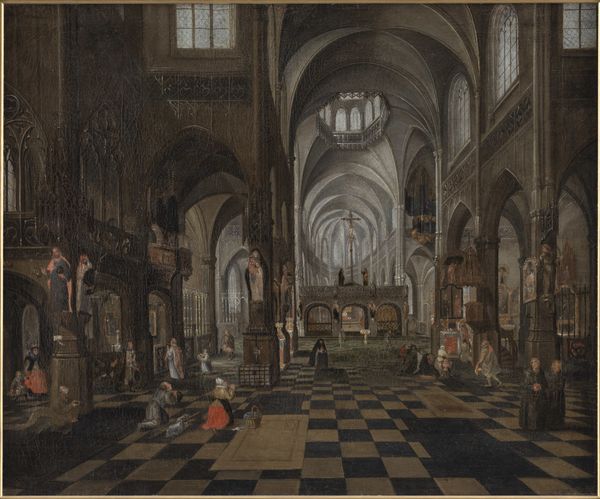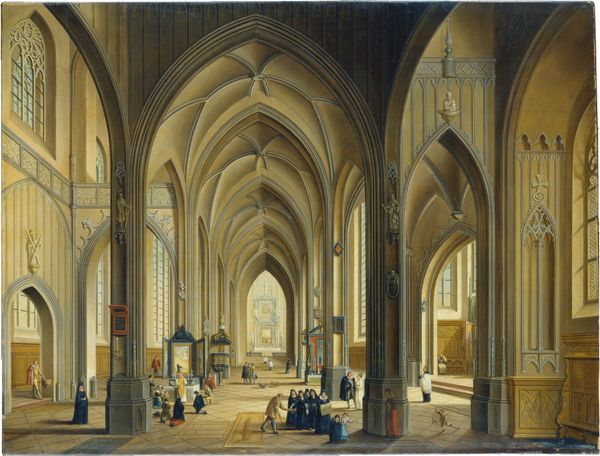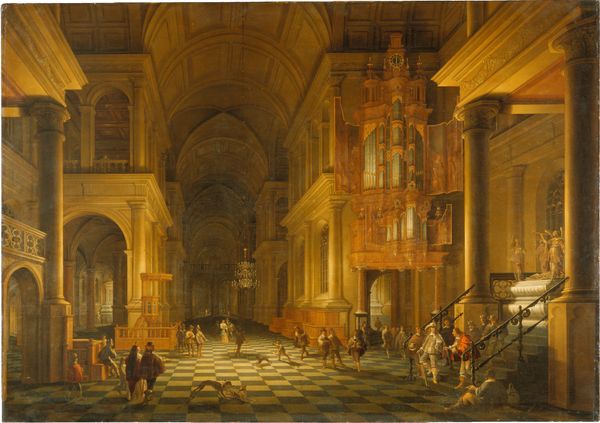
painting, oil-paint
#
medieval
#
baroque
#
dutch-golden-age
#
painting
#
oil-paint
#
perspective
#
genre-painting
#
realism
Dimensions: height 44 cm, width 64 cm, depth 9 cm
Copyright: Rijks Museum: Open Domain
Curator: Here we have Daniel de Blieck's "Church Interior," an oil painting dating back to 1652, placing it squarely within the Dutch Golden Age. Editor: Wow. Just, wow. That perspective is almost dizzying! I feel like I’m falling into that massive space, that light…it’s kind of serene and also a little unsettling. Like being a tiny figure lost in a giant's house. Curator: De Blieck was deeply interested in architectural rendering, and here you see that playing out beautifully. Notice how the light and shadow define the structure, but also draw attention to the materiality - the stone, the glass...Consider the labour involved in erecting such a building. Editor: I am thinking that it makes me feel incredibly small, while looking at those tiny figures almost scattered across the floor, they’re so dwarfed by the scale. Almost like lost ants, don't you think? It's definitely realistic, capturing that vastness in a tangible way. Curator: Realism certainly is a key characteristic, though it's tempered by a touch of Baroque drama. But beyond that impression of vastness, consider that the church functioned as a central organizing hub of social life in 17th-century Dutch society. Religious rituals, definitely, but also public announcements, commerce, civic gatherings…it was all concentrated in the architecture of places such as these. Editor: You can almost hear the echoes…the whispers, the shuffling of feet. And maybe that’s why it feels slightly…sad? Melancholic? Not just a holy place but all those communal, public rituals fading slowly into distant memory. Curator: Precisely. I’d highlight De Blieck's use of oil paint, too. He creates incredible depth using fairly muted colours; this gives it a really authentic feel, reflective of both the medieval building practices and social setting he paints with it. The deliberate application serves to amplify both structure and space while drawing the eye from shadow to illumination. Editor: It feels very lived-in, worn somehow…not in disrepair, but definitely marked by countless hours of worship, arguments, life. I see the history written into its stones. That perspective trick just sweeps me right in to feel every ounce of what’s been left behind in this church. I guess time waits for no church interior! Curator: And how labor built them brick by brick. That's our picture. Editor: Nicely put, the labor of light on that church. Makes it very present.
Comments
No comments
Be the first to comment and join the conversation on the ultimate creative platform.
